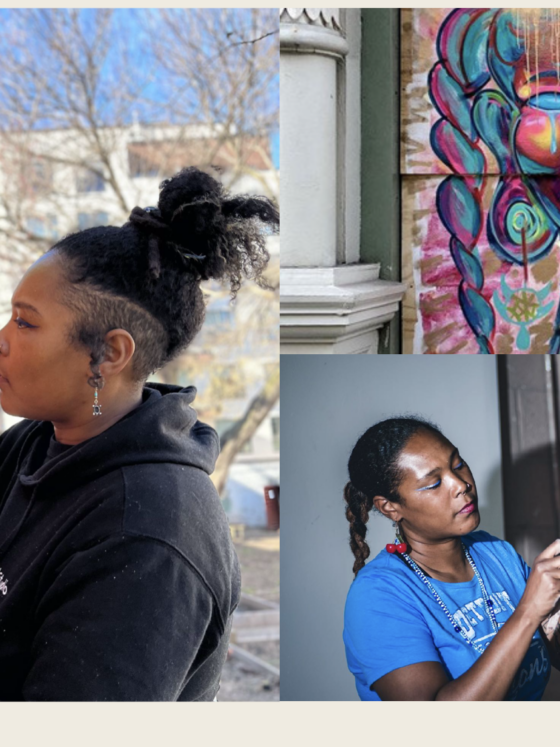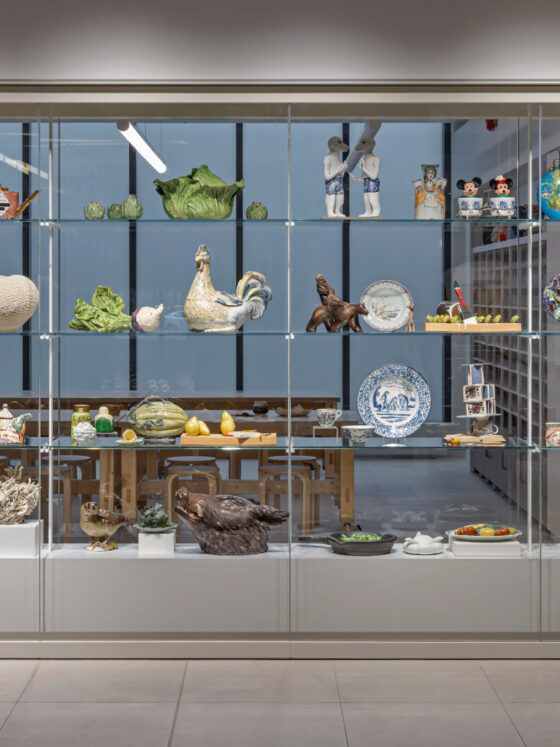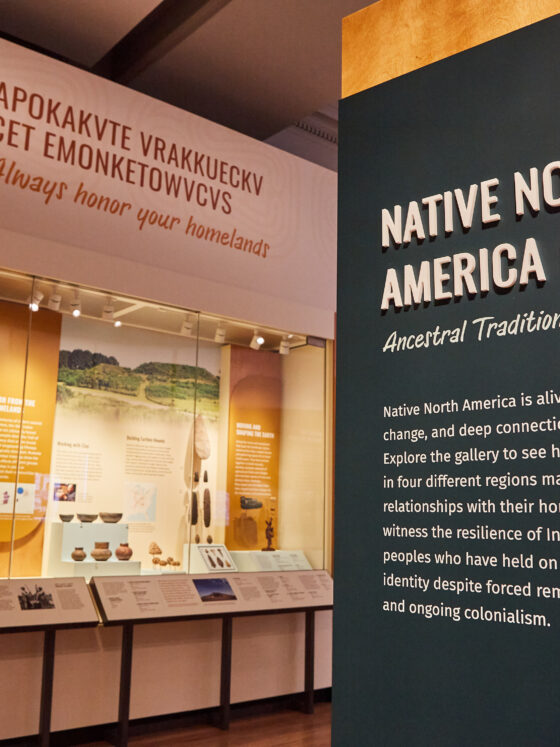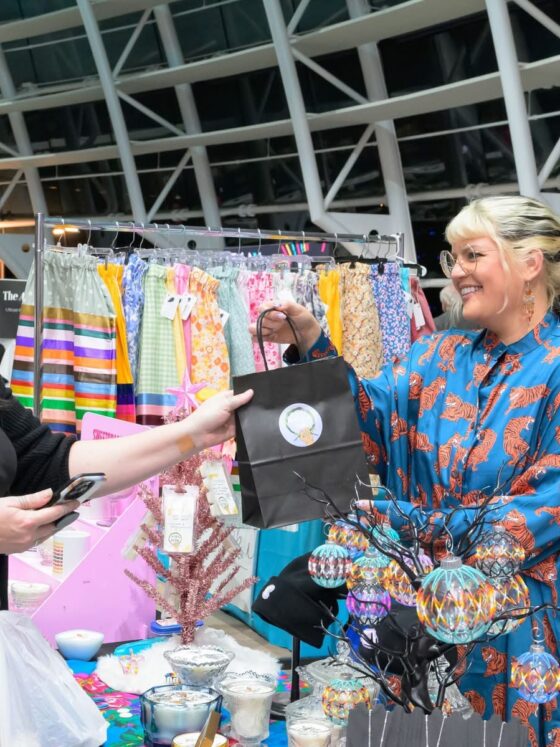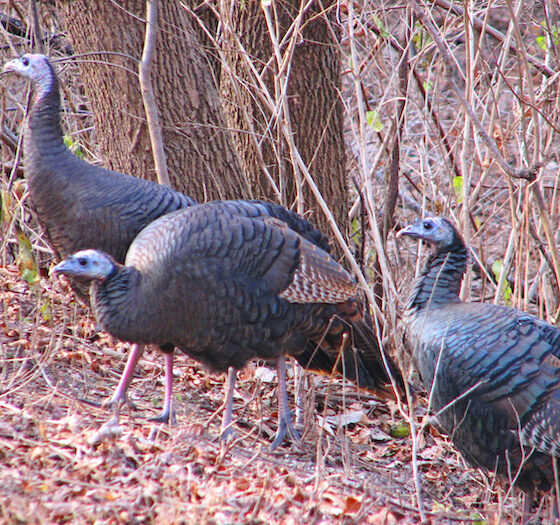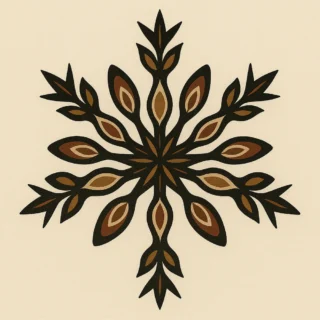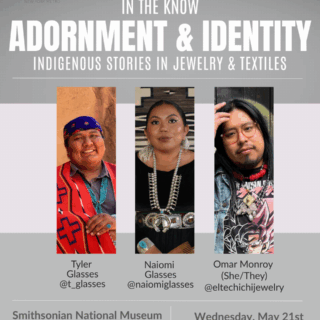Native Artists in South Dakota Forge Ahead
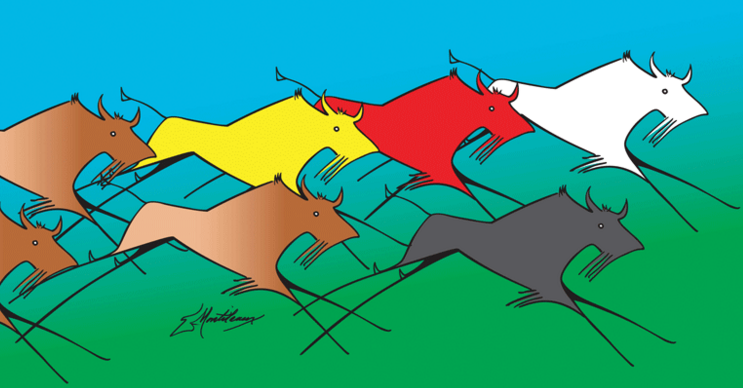
Special to Fry Bread from Todd Epp, Northern Plains News
Native artists are reshaping South Dakota’s art scene.
Building a Home for Native Art
The Oglala Lakota Artspace opened in Kyle in 2021—the first community arts center on the Pine Ridge Reservation, according to First Peoples Fund, a national nonprofit that supports Native artists. Due to COVID-19 restrictions, the facility operated in a limited capacity until early 2022, with its grand opening celebration held on May 20, 2023.
The 8,500-square-foot center offers studio space, business training, and a place for artists to learn and collaborate, according to the organization.
Bryan Parker, art program manager for First Peoples Fund, told Black Hills Fox that the center’s curriculum “teaches folks how to seek the value of their work and in themselves professionally, and provides other tips and knowledge on how to navigate the professional art world.”
Gus Yellow Hair, a longtime Native artist involved with Rolling Rez Arts, emphasized to PBS News the importance of mobility in Native culture and how the program brings resources directly to communities.
Art Rooted in Culture and Resilience
For many Native artists, the connection between art and cultural values runs deep.
“The First Peoples Fund grounds all of their work on a core set of values that are inspired by Lakota teachings,” said Dyani White Hawk, a Sicangu Lakota artist whose work has been displayed at the Smithsonian. “The organization makes an effort to actively remember who has brought us to the place we are today,” she told the Bush Foundation.
A 2013 study by Colorado State University and First Peoples Fund found that about one-third of Native people in western South Dakota are artists or could be. Yet over 60 percent of emerging Native artists still earn under $10,000 annually. The study also reported that half of Pine Ridge households rely on home-based businesses, often selling traditional arts. No more comprehensive study has been conducted since, and the findings remain a benchmark in First Peoples Fund’s recent “Investing in the Indigenous Arts Ecology” report.
Some artists have significantly increased their annual income through training and financial support. First Peoples Fund reports that participants in its Artists in Business Leadership Program increased their annual revenue by nearly 38 percent—from $19,575 to $26,982, according to ICT News.
While the Federal Reserve Bank of Minneapolis reported in 2023 that real median income for Native people on tribal lands grew 14 percent from 2009 to 2018, the economic gap remains significant. Re-Member, a nonprofit serving Pine Ridge, reports per capita income there is just $7,773, compared to a U.S. average of $27,599.
Leaders Shaping the Future
Keith Braveheart, Oglala Sioux Tribe Artist Laureate, leads painting classes at the Artspace. He was named one of two 2023-2024 laureates through the tribe’s Artist Laureate Program and received a $10,000 award, which he used to establish the Oglala Lakota Arts Society, according to the Oglala Sioux Tribe.
“This is just what we need,” said James Cross, a member of the Oglala Lakota Tribal Council’s Economic Development Committee. “Now our artists will have a state-of-the-art place of their own, and the exhibition and performance space will attract visitors,” he told First Peoples Fund.
The residency program has been transformative for participants like Tracy Hauff, an Oglala Lakota writer. “This was the first time I got to live on the reservation, even if it was only four weeks, and be immersed in the culture and the people,” she said on the First Peoples Fund blog.
Supporting and Expanding Native Voices
Support for Native artists also comes from organizations like the South Dakota Arts Council, which offers Traditional Arts Apprenticeship Grants of up to $5,000 and Artist Career Development Grants of $2,000. The Bush Foundation has revived its Bush Prize program, with separate selection processes for South Dakota and the 23 Native nations in the region.
“What I’m hoping to do is I’m hoping to tell a story with my art,” said Donald Brave, a young artist who recently sold his first piece for $50. “I want to instill the values and the morals of Lakota culture into my artwork,” he told PBS News.
Artists like Braveheart and the Two Bulls family blend tradition with innovation, using everything from beadwork and star quilts to car doors and digital art, according to artist profiles published by First Peoples Fund.
“For Native communities, the boxes are irrelevant,” Heather Ahtone, a curator of Native American art, told the National Endowment for the Arts. “The challenge is that the art world has held on to these boxes and categories for much longer than they had a valid application.”
Challenges remain. Many artists still lack access to supplies, business networks, and buyers, according to First Peoples Fund’s 2023 annual report. The Oglala Lakota Artspace and the Rolling Rez Arts bus help fill those gaps, but needs are high.
Supporting Native artists in South Dakota isn’t just about culture—it’s about economic survival and community resilience. Nearly 48 percent of Native Americans in the state live in poverty, far above the national average, according to World Population Review.


